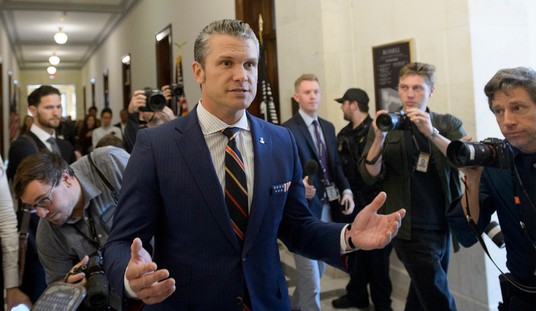The debates over mobile spectrum aggregation and the auction rules for the FCC’s upcoming incentive auction — like all regulatory rent-seeking — can be farcical. One aspect of the debate in particular is worth highlighting, as it puts into stark relief the tendentiousness of self-interested companies making claims about the public interestedness of their preferred policies: The debate over how and whether to limit the buying and aggregating of lower frequency (in this case 600 MHz) spectrum.
A little technical background is in order. At its most basic, a signal carried in higher frequency spectrum doesn’t travel as well as a signal carried in lower frequency spectrum. The higher the frequency, the closer together cell towers need to be to maintain a good signal.
600MHz is relatively low frequency for wireless communications. In rural areas it is helpful in reducing infrastructure costs for wide area coverage because cell towers can be placed further apart and thus fewer towers must be built. But in cities, population density trumps frequency, and propagation range is essentially irrelevant for infrastructure costs. In other words, it doesn’t matter how far your signal will travel if congestion alleviation demands you build cell towers closer together than even the highest frequency spectrum requires anyway. The optimal — nay, the largest usable — cell radius in urban and suburban areas is considerably smaller than the sort of cell radius that low frequency spectrum allows for.
It is important to note, of course, that signal distance isn’t the only propagation characteristic imparting value to lower frequency spectrum; in particular, it is also valuable even in densely populated settings for its ability to travel through building walls. That said, however, the primary arguments made in favor of spreading the 600 MHz wealth — of effectively subsidizing its purchase by smaller carriers — are rooted in its value in offering more efficient coverage in less-populated areas. Thus the FCC has noted that while there may be significant infrastructure cost savings associated with deploying lower frequency networks in rural areas, this lower frequency spectrum provides little cost advantage in urban or suburban areas (even though, as noted, it has building-penetrating value there).
It is primarily because of these possible rural network cost advantages that certain entities (the Department of Justice, Free Press, the Competitive Carriers Association, e.g.) have proposed that AT&T and Verizon (both of whom have significant lower frequency spectrum holdings) should be restricted from winning “too much” spectrum in the FCC’s upcoming 600 MHz incentive auctions. The argument goes that, in order to ensure national competition — that is, to give other companies financial incentive to build out their networks into rural areas — the auction should be structured to favor Sprint and T-Mobile (both of whose spectrum holdings are mostly in the upper frequency bands) as awardees of this low-frequency spectrum, at commensurately lower cost.
Shockingly, T-Mobile and Sprint are on board with this plan.
So, to recap: 600MHz spectrum confers cost savings when used in rural areas. It has much less effect on infrastructure costs in urban and suburban areas. T-Mobile and Sprint don’t have much of it; AT&T and Verizon have lots. If we want T-Mobile and Sprint to create the competing national networks that the government seems dead set on engineering, we need to put a thumb on the scale in the 600MHz auctions. So they can compete in rural areas. Because that’s where 600MHz spectrum offers cost advantages. In rural areas.
So what does T-Mobile plan to do if it wins the spectrum lottery? Certainly not build in rural areas. As Craig Moffett notes, currently “T-Mobile’s U.S. network is fast…but coverage is not its strong suit, particularly outside of metro areas.” And for the future? T-mobile’s breakneck LTE coverage ramp up since the failed merger with AT&T is expected to top out at 225 million people, or the 71% of consumers living in the most-populated areas (it’s currently somewhere over 200 million). “Although sticking to a smaller network, T-Mobile plans to keep increasing the depth of its LTE coverage” (emphasis added). Depth. That means more bandwidth in high-density areas. It does not mean broader coverage. Obviously.
Sprint, meanwhile, is devoting all of its resources to playing LTE catch-up in the most-populated areas; it isn’t going to waste valuable spectrum resources on expanded rural build out anytime soon.
The kicker is that T-Mobile relies on AT&T’s network to provide its urban and suburban customers with coverage (3G) when they do roam into rural areas, taking advantage of a merger break-up provision that gives it roaming access to AT&T’s 3G network. In other words, T-Mobile’s national network is truly “national” only insofar as it piggybacks on AT&T’s broader coverage. And because AT&T will get the blame for congestion when T-Mobile’s customers roam onto its network, the cost to T-Mobile of hamstringing AT&T’s network is low.
The upshot is that T-Mobile seems not to need, nor does it intend to deploy, lower frequency spectrum to build out its network in less-populated areas. Defenders say that rigging the auction rules to benefit T-Mobile and Sprint will allow them to build out in rural areas to compete with AT&T’s and Verizon’s broader networks. But this is a red herring. They may get the spectrum, but they won’t use it to extend their coverage in rural areas; they’ll use it to add “depth” to their overloaded urban and suburban networks.
But for AT&T the need for additional spectrum is made more acute by the roaming deal, which requires it to serve its own customers and those of T-Mobile.
This makes clear the reason underlying T‑Mobile’s advocacy for rigging the 600 MHz auction – it is simply so that T‑Mobile can acquire this spectrum on the cheap to use in urban and suburban areas, not so that it can deploy a wide rural network. And the beauty of it is that by hamstringing AT&T’s ability to acquire this spectrum, it becomes more expensive for AT&T to serve T‑Mobile’s own customers!
Two birds, one stone: lower your costs, raise your competitor’s costs.
The lesson is this: If we want 600 MHz spectrum to be used efficiently to provide rural LTE service, we should assume that the highest bidder will make the most valuable use of the spectrum. The experience of the relatively unrestricted 700 MHz auction in 2008 confirms this. The purchase of 700 MHz spectrum by AT&T and Verizon led to the US becoming the world leader in LTE. Why mess with success?
Geoffrey A. Manne is Executive Director of the International Center for Law & Economics and Senior Fellow atTechFreedom. He blogs at Truth on the Market and tweets at @geoffmanne.












Join the conversation as a VIP Member